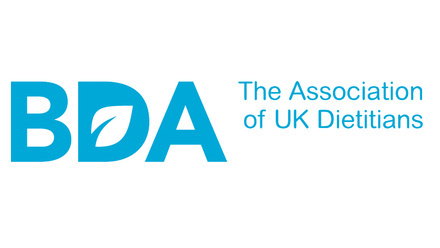Steffie ElHassan, Louise Salsbury and Gilly Hopper address the use of including connected eating principles in diabetes care for families living with Type 1 diabetes.
A diagnosis of Type 1 diabetes mellitus (T1DM) during childhood and adolescence has a profound emotional and practical impact on the child and their family.1 Whilst the stress and anxiety of managing food and meals may be acknowledged at diagnosis, longer term impacts on food and eating are often overlooked during routine diabetes care.
The increased incidence of eating disorders (ED) in patients with T1DM is well documented, with a higher prevalence of ED in adolescents and young adults with T1DM than in their peers.2 The treatment and management of the condition is a risk factor for the development of an eating disorder.3,4 In addition to ED, eating restrictions, poor self-esteem, insulin omission and weight/shape concerns are potential predictors for diabetes distress and impaired quality of life.5,6 However, the ways in which T1DM can impact on relationships with food and body from diagnosis, and the role of dietetic practice within this, have not been explored within the literature.
Current nutritional messages within T1DM care
Current nutritional messages within T1DM focus on developing meal routine, counting carbohydrates, meal/snack choices, foods which do/do not require insulin dosing and managing hypoglycaemia. Subsequently, children and young people (CYP) can experience a loss of attunement to internal signals (appetite, hunger, fullness) as their focus shifts to carbohydrate counting and managing blood glucose levels, a loss of flexibility and spontaneity around eating, reduced pleasure and increased tension around meals/snacks, and heightened weight and shape concerns. While these issues are often not acknowledged or addressed, they contribute to psychological and eating distress.7
In contrast, a connected eating (CE) approach encourages an awareness of body cues, self-care and body respect whilst recognising that other conditions (such as T1DM) can disrupt hunger. It also acknowledges the wider role that food plays in our lives and how food relates to our health, emotions, values and identity.8 As clinicians, we propose including CE principles in diabetes care from the time of diagnosis, as suggested in Table 1, so that CYP living with T1DM are supported in developing or maintaining a healthier relationship with food and their bodies.
Table 1: Current nutritional messages delivered through diabetes education compared to principles of connected eating, identifying suggested changes to practice.
|
Current diabetes dietetic education7,9 |
Connected eating8 |
Suggested additions to current practice in diabetes education from diagnosis, to include CE principles |
|---|---|---|
|
Eat a healthy balanced diet; the Eatwell Guide |
Understand that food is relational; let food serve a range of roles and meet a range of needs |
Appreciate the wider context of food and eating, enjoyment of food, and the role food plays in our lives; acknowledge changing relationships with food; offer support to include/manage favourite foods and those causing blood glucose spikes |
|
Carbohydrate counting; identify carbohydrates within meal/snack; weigh/quantify portion and calculate insulin dose based on insulin to carb ratio; nutrients; glycaemic index |
Legitimise foods by using descriptive words (such as cold, crunchy, sweet, spicy) instead of value-laden words (good/bad, healthy/unhealthy, positive/negative) |
Use descriptive, legitimising words and encourage families to discuss foods in this way; avoid associating the presence of carbohydrate in a food with negative language; enable CYP to understand how their body responds to different foods |
|
Regular meal routine with limited snacking and grazing |
Provide developmentally appropriate structure to meals/snacks (time, place) as circumstances permit |
Discuss developmentally appropriate meals and meal times; focus on inclusion rather than limitations as much as possible; acknowledge some loss of spontaneity in eating and that changes to amounts/timings of some foods/drinks may support overall health |
|
Carbohydrate counting; insulin timing; treatment for hypoglycaemia; adjust food for activity |
Use different ways of knowing including awareness of body signals – hunger, fullness, emotions, energy levels; support children to eat to appetite, selecting from a variety of foods (provided by adult with taste/ nutrients/likes etc. in mind) |
Encourage tuning into body cues; expect variations in appetite and include CYP in decisions around meal size; encourage flexibility in insulin regime; recognise that managing blood glucose levels can be challenging; understand that food may be used to avoid hypoglycaemia regardless of hunger, minimising this where possible; encourage appropriate hypo treatment |
|
BMI; healthy weight; energy balance; regular activity for health and to manage weight if appropriate |
Health gain; body respect; body diversity; focusing on self-care, self-worth and enjoyable activity |
Acknowledge that there can be significant fluctuations in weight around diagnosis, weight gain associated with intensive insulin therapy, and the impact of these; monitor height and weight sensitively; use body respectful, nonstigmatising language and value the person’s qualities; encourage activity for enjoyment and self-care rather than for weight or blood glucose management |
Multidisciplinary approaches to changing nutritional care
A multidisciplinary group connected to the North West Children and Young People’s Diabetes Network (Network) is developing an approach that includes CE in paediatric diabetes care. The group was initiated in March 2019 by paediatric dietitians, psychologists and a parent who recognised the value of collaborative working, and that it is not only the dietitian who has a role in noticing and addressing diabetes-related food issues.
Unpublished data collected from an online survey of paediatric dietitians within this Network, exploring topics discussed within the first four weeks of diagnosis and the importance of these, showed little variation in the way dietitians discussed and valued healthy eating, including fruit and vegetables/dairy/pulses, using glycaemic index, having a meal routine, carbohydrate counting and activity. However, there was significant variation in dietetic advice given regarding certain topics, particularly whether to limit snacking, using a fixed daily carbohydrate intake, and changing relationship with food. Topics such as weight fluctuations, appetite regulation and how relationships with food may change are considered important by many dietitians but currently do not form a routine part of nutritional care.
Implications for practice and further work
Fostering a healthy relationship with food for families living with T1DM by incorporating CE messages is not something currently understood or discussed across education. As dietitians, we need to consider the role that this could play from diagnosis, as a preventative approach to developing disordered eating and difficult relationships with food.
The collaborative process of dietitians and psychologists working together has enabled clinicians to learn from each other, and the views of a parent have also ensured the process keeps families at its centre. Following the dietitians’ survey and discussions, the group identified a need for resources on T1DM and CE that can be given soon after diagnosis, only one such resource being known.10 Consequently, a series of ‘Enjoyable Eating with Diabetes’ leaflets have been developed and are now available to all Network members and paediatric diabetes dietitians nationally. A pathway for disordered eating and ED in T1DM in CYP is being developed with local ED teams, considering all stages from challenging relationships with food to a diagnosable ED. In addition an informal screening tool based on questions from a parents’ survey is being piloted, for use by dietitians to assess how living with T1DM is impacting on the CYP and their family’s relationship with food and eating.
In November 2020 the group became a formal sub-group of the Network, called PDPEAS (Paediatric Diabetes Positive Eating, Activity and Self) with additional representation from nurses, doctors, the network’s manager and data quality manager. Its work contributes to the Five Year Service Delivery Plan of the National Children and Young People’s Diabetes Network (2020).
Conclusion
Current diabetes care does not incorporate CE messages within discussions with families or education provided. The importance of fostering a HRF should ideally be raised from the time of diagnosis, to reduce diabetes distress and as a preventative measure for eating disorder behaviour. A consistent MDT approach incorporating CE principles needs to be taken to foster this from the start. It should not solely be the role of the dietitian to notice and address food issues, although they may be the first to pick up on and explore these.
Further research, resource development and training are needed for all professionals to discuss this aspect of living with T1DM confidently and routinely in practice. Contributing to the National Network’s Five Year Service Delivery Plan will further this approach and support embedding these messages into structured education and diabetes care nationally.
References
- Jönsson, L., Lundqvist, P., Tiberg, I., & Hallström, I. (2015). Type 1 diabetes – impact on children and parents at diagnosis and 1 year subsequent to the child’s diagnosis. Scandinavian journal of caring sciences, 29(1), 126–135. doi.org/10.1111/scs.12140
- Young, V., Eiser, C., Johnson, B., Brierley, S., Epton, T., Elliott, J., & Heller, S. (2013). Eating problems in adolescents with Type 1 diabetes: a systematic review with meta-analysis. Diabetic medicine: a journal of the British Diabetic Association, 30(2), 189–198. doi.org/10.1111/j.1464-5491.2012.03771.x
- Goebel-Fabbri, A. (2017). Prevention and Recovery from Eating Disorders in Type 1 Diabetes. New York: Routledge. doi.org/10.4324/9781315710136
- Corbett T., & Smith J. (2020). Disordered eating and body image in adolescents with type 1 diabetes. Diabetes Care for Children & Young People, 9(3), 1-5.
- Gagnon, C., Aimé, A., & Bélanger, C. (2017). Predictors of Comorbid Eating Disorders and Diabetes in People with Type 1 and Type 2 Diabetes. Canadian journal of diabetes, 41(1), 52–57. doi.org/10.1016/j.jcjd.2016.06.005
- Treasure, J., Kan, C., Stephenson, L., Warren, E., Smith, E., Heller, S., & Ismail, K. (2015). Developing a theoretical maintenance model for disordered eating in Type 1 diabetes. Diabetic medicine: a journal of the British Diabetic Association, 32(12), 1541–1545. doi.org/10.1111/dme.12839
- Smart, C. E., Annan, F., Higgins, L.A., Jelleryd, E., Lopez, M., Acerini, C.L. (2018). ISPAD Clinical Practice Consensus Guidelines 2018: Nutritional management in children and adolescents with diabetes. Paediatric Diabetes, 19(27), 136– 154.doi.org/10.1111/pedi.12738
- Aphramor, A. (2015). Mindfulness in healthy weight and diabetes. Journal of Diabetes Nursing, 19, 401–7.
- National Children and Young People’s Diabetes Network (2020). Delivery Plan 2020-25 cypdiabetesnetwork.nhs.uk/national-network/wpcontent/uploads/sites/14/2020/05/NCYPDNdelivery-plan-2020-2025.pdf. Accessed 22/02/2021
- UCLH (2019) Under Five’s, Food, Activity and Diabetes uclh.nhs.uk/patients-and-visitors/patientinformation-pages/under-fives-foodactivity-and-diabetes Accessed 21/02/2021





